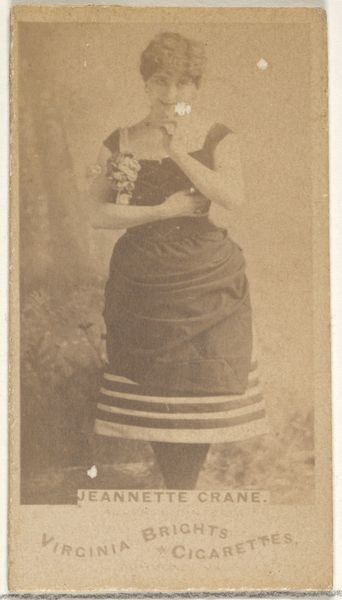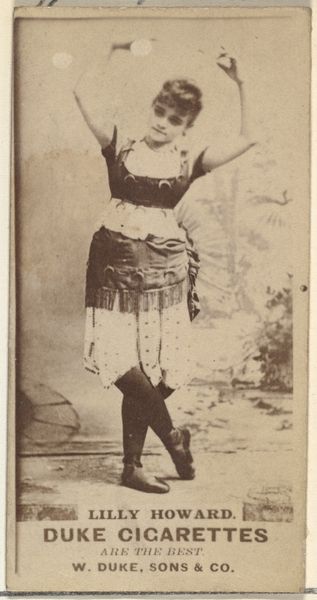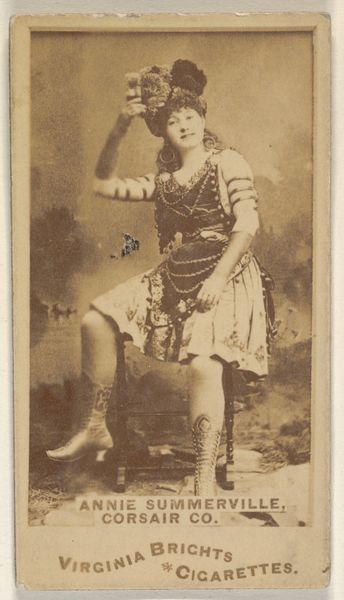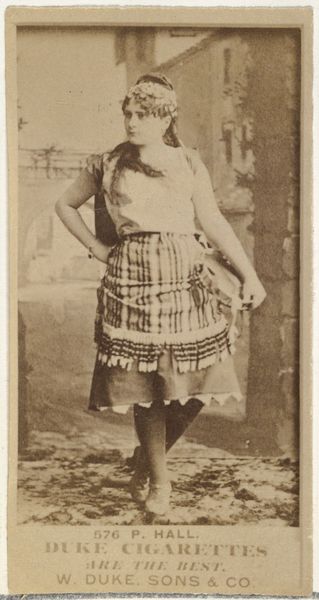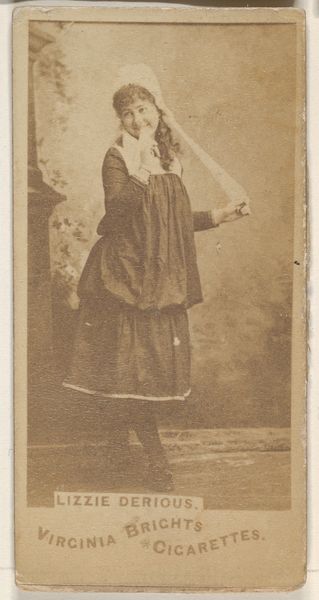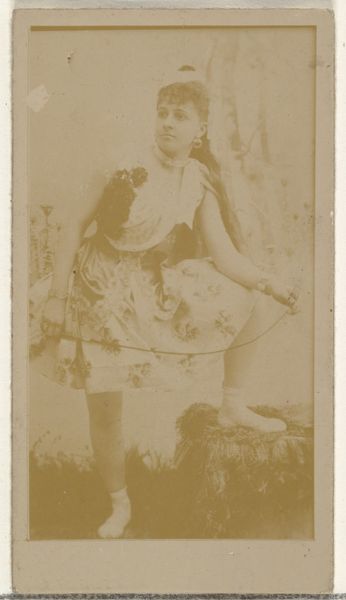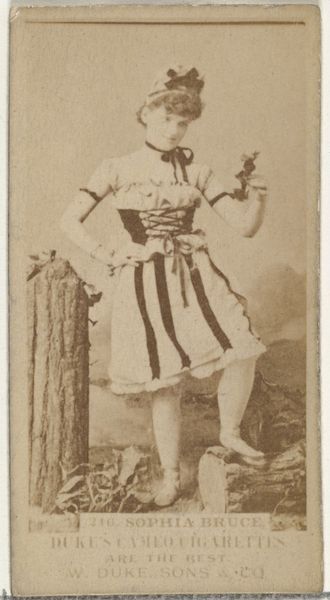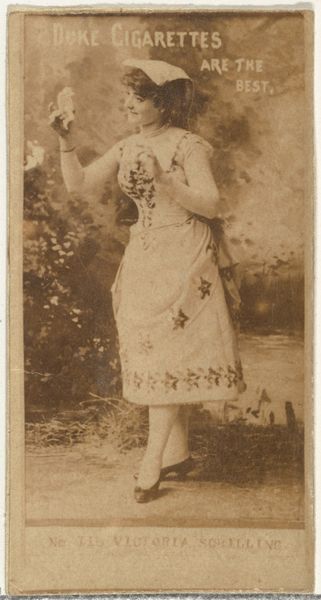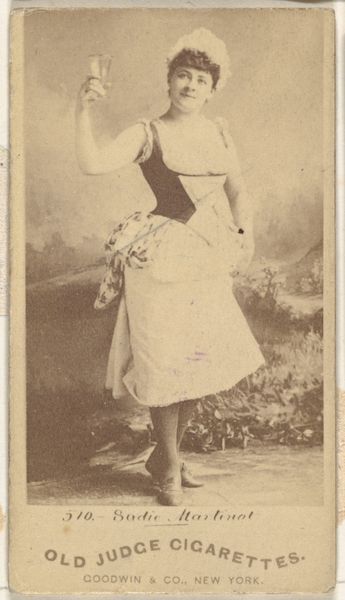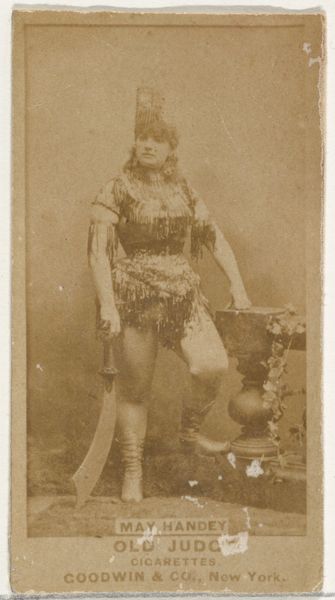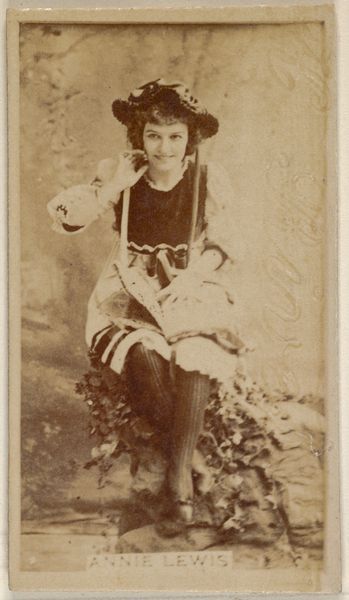
Lilly Howard, from the Actors and Actresses series (N45, Type 1) for Virginia Brights Cigarettes 1885 - 1891
0:00
0:00
drawing, print, photography
#
portrait
#
drawing
#
toned paper
# print
#
photography
Dimensions: Sheet: 2 3/4 x 1 3/8 in. (7 x 3.5 cm)
Copyright: Public Domain
Editor: So this is "Lilly Howard, from the Actors and Actresses series," created sometime between 1885 and 1891 by Allen & Ginter. It's currently held here at the Met. The pose feels quite theatrical, very staged, with this muted palette. What visual elements stand out to you? Curator: The composition presents a deliberate arrangement of shapes and lines. Observe the dancer's contrapposto stance, creating a dynamic interplay of diagonals. The subtle gradations of tone on the toned paper articulate her form and costume. Notice how the artist manipulates light to emphasize certain features while obscuring others, creating visual interest through chiaroscuro effects. What compositional decisions strike you as most impactful? Editor: I think it’s the use of line, both in her posture, the drape of her clothing and the blurred background that give it movement and drama, especially since the palette is limited. The implied movement is so strong. But is there more here than just an exploration of form? Curator: The limitations imposed by the print medium actually foreground a specific intention: The emphasis shifts away from realism and concentrates the viewer’s attention on the surface quality. The very two-dimensionality of the image underscores the aesthetic intent. So rather than delving into historical context, or authorial intent, consider how these choices shape our visual experience and our appreciation of the aesthetic form itself. Do you see how its form generates the artistic merit and what we take away from this work? Editor: I see it now; by focusing on the line and form itself, I hadn’t noticed how that becomes the content. It reframes how I look at photography of this period. Curator: Indeed. Focusing on the visual and material construction can offer its own distinct rewards.
Comments
No comments
Be the first to comment and join the conversation on the ultimate creative platform.
